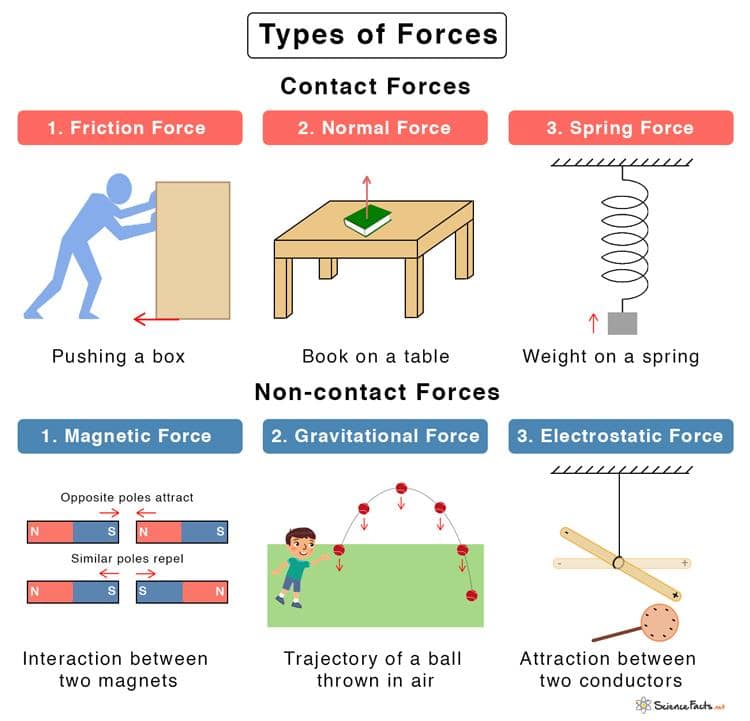How Many Types of Force Exist
Introduction
According to Isaac Newton's theory, force is defined as the push or pull of an object with mass, causing it to change its velocity. Force is an external agent capable of changing a body's state of rest or motion. It has magnitude and direction.
S.I Unit of Force
Common symbols: | F→, F |
SI unit: | Newton |
In SI base units: | kg·m/s2 |
Other units: | dyne, poundal, pound-force, kip, kilo pond |
Derivations from other quantities: | F = m a |
Dimension: | LMT-2 |
Types of Forces
There are two types of forces.
1. Contact forces
2. Non-contact forces
Forces that act on a body directly or indirectly through any medium are called “contact forces.”
Examples of contact forces are;
Muscular Forces
Mechanical Forces
Frictional Forces
Forces that act through spaces without making any body contact are known as “non - contact forces.”
Examples of non-contact forces;
Gravitational Forces
Electrostatic Forces
Magnetic Forces
Unit of Forces;
In the centimetre-grammar-second system of units (CGS unit), force is expressed in dyne.
The standard international system of units (SI unit) is expressed in Newton (N).


Effects of Force:
A motion is known as a change in position concerning time. In simpler words, motion refers to the movement of a body. Traditionally, motion can be described as
Change in speed
Change in direction
Force that has different effects. In different scenarios.
They can make a body that is at rest to move.
They can stop a moving body or slow it down.
They can accelerate the speed of a moving body.
They also change the direction of a moving body, along with its shape and size.
Applications for Admissions are open.
As per latest syllabus. Physics formulas, equations, & laws of class 11 & 12th chapters
JEE Main Important Chemistry formulas
Get nowAs per latest syllabus. Chemistry formulas, equations, & laws of class 11 & 12th chapters
JEE Main high scoring chapters and topics
Get nowAs per latest 2024 syllabus. Study 40% syllabus and score upto 100% marks in JEE
JEE Main Important Mathematics Formulas
Get nowAs per latest syllabus. Maths formulas, equations, & theorems of class 11 & 12th chapters